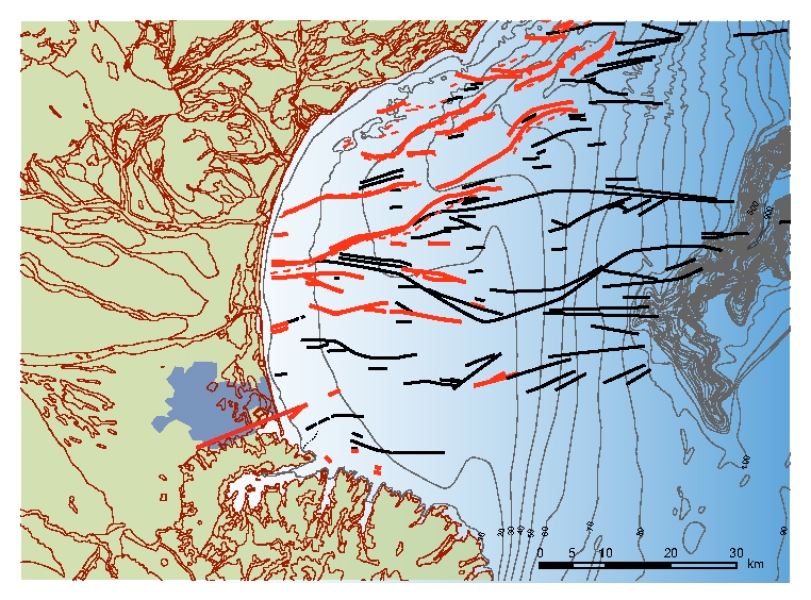A preliminary seismic survey of the seabed off the north Canterbury coast has found a complex arrangement of geologic faults in the bedrock under Pegasus Bay.
In March, NIWA's research vessel Kaharoa surveyed an 800 squarekilometre area with geophysical seismic gear, and found widespread faulting in basement rocks. It also revealed a smaller number of 'reactivated' faults – those known to be long-dormant that now show signs of recent movement.
The survey, a collaboration with the University of Otago, uncovered a previously unknown fault east of Kaiapoi. The new fault – perhaps 25km long – could be capable of generating a magnitude six to seven earthquake.
The marine seismic data show how more recent faulting – over the last tens of thousands, to hundreds of thousands, of years – has reactivated old faults that first developed more than 60 million years ago.
NIWA Principal Scientist Dr Philip Barnes says they confirm "... what we sort of expected: the active young structures are also reactivating old faults".
The very old basement faults mostly run east – west, and extend throughout the whole North Canterbury region. Most of the reactivated offshore faults are as slow-moving as any known in New Zealand.
Barnes says offshore faults were found closer to Christchurch than those previously known, but "appear to have very low activity rates, implying that they're very long return-time earthquake hazards".
At present, he says, most aftershocks are occurring under the land. "There's no strong evidence that they're associated with any of the offshore faults".
However, the large onshore earthquakes of 13 June appeared to be centred just to the west of faults found not far off the coast of Port Levy and Pigeon Bay. Barnes said they could potentially be related, but "the precise structure, extent, and significance of those faults are still unclear".
Before scientists could better understand the faulting close to Christchurch, more analysis was needed to take account of ongoing aftershocks and geophysical studies onshore, said Barnes.
NIWA's seismic survey work is part of the Natural Hazards Research Platform project to inform earthquake recovery work in Christchurch. Scientists from GNS Science, and the universities of Canterbury, Otago, and Calgary are also contributing.


